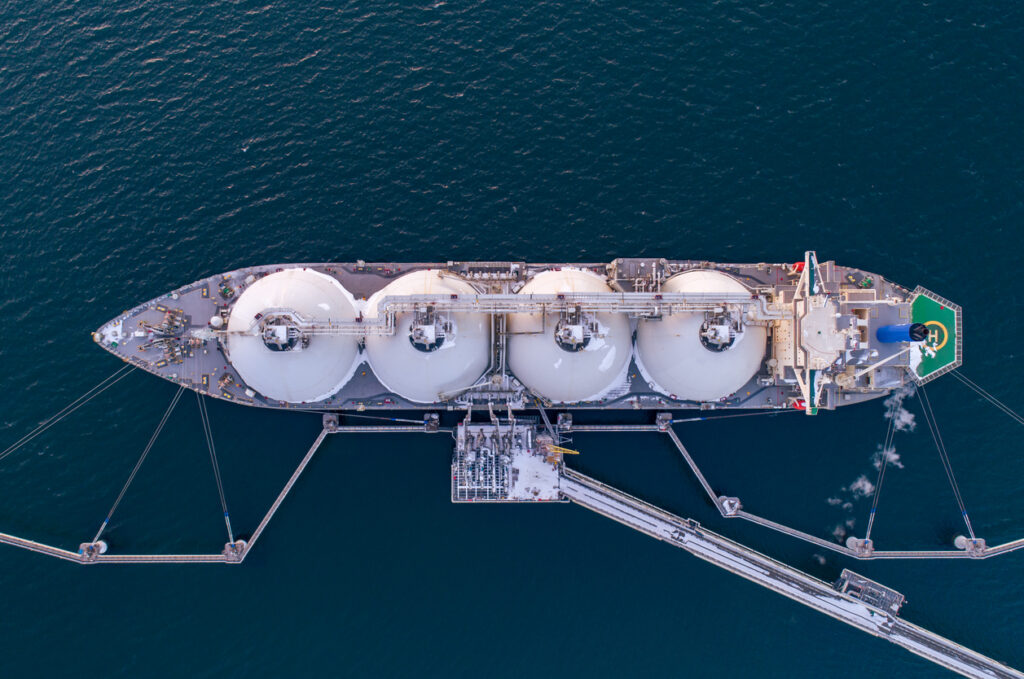(Oil Price)– American LNG exports hit a monthly record in August as newly started-up projects gradually ramp up output and shipments, and facilities ended planned maintenance.

The August record will be beaten very soon as new export projects are close to launch and the supportive Trump Administration continues to approve proposed plants.
Three U.S. LNG projects have taken final investment decision (FID) this year, and more are in the pipeline to do so in the coming months.
The case for increased LNG exports remains solid—ample supply from U.S. domestic shale gas production, growing need for U.S. LNG, especially in Europe looking to ditch Russian gas by the end of 2027, and a ‘drill, baby, drill’ policy of the U.S. Administration supporting increased domestic oil and gas output and overseas exports.
Record LNG Shipments
The United States, which has been the world’s top LNG exporter since 2023 after overtaking both Qatar and Australia, shipped 9.33 million metric tons of the super-chilled fuel in August, according to preliminary ship-tracking data by financial firm LSEG cited by Reuters.
The August export level beat the previous record-high from April this year, when 9.25 million tons of LNG were shipped from American export facilities, the data showed.
The volumes in August were higher than July’s 9.1 million tons as plants exited maintenance.
Europe remains the top destination of U.S. LNG exports—with 6.16 million tons of the American shipments, the European market absorbed about 66% of all U.S. exports in August.
Europe’s share of American exports rose from 58% in July as European countries look to fill up storage sites ahead of the winter in a favorable market where spot LNG demand in Asia is lackluster, allowing Europe to absorb more U.S. LNG amid eased Europe-Asia competition for cargoes.
Europe is set to remain a key destination for U.S. LNG as the EU aims to phase out all Russian energy imports, including gas, by the end of 2027. The EU has introduced more flexibility to its pre-winter gas inventory targets, but countries are still mandated to have storage at least 90% full by December 1 each year.
The EU needs more LNG this year to meet its storage targets after the past cold winter left inventories at levels below the five-year average. Luckily for Europe, Asia hasn’t put up too much competition amid muted LNG demand, high inventories, and lower Chinese LNG imports amid increased pipeline gas supply from Russia and central Asia and rising domestic gas production.
More U.S. LNG Supply in the Pipeline
U.S. LNG developers are encouraged by the Trump Administration’s reversal of the Biden Administration’s pause on new LNG project approvals and are taking advantage of the market and regulatory tailwinds to approve investments in new projects.
So far this year, Australia’s Woodside has announced the FID for the Louisiana LNG project and plans to start production in 2029. U.S. LNG exporter Venture Global in July took FID and successfully closed the $15.1 billion project financing for the first phase of the company’s third project, CP2 LNG (CP2), together with the associated CP Express Pipeline. And top U.S. exporter Cheniere has made a positive FID for the Corpus Christi Midscale Trains 8 & 9 and Debottlenecking Project. Upon completion of CCL Midscale Trains 8 & 9, and together with expected debottlenecking and CCL Stage 3, the Corpus Christi LNG terminal is expected to exceed 30 million tonnes per annum (mtpa) in total liquefaction capacity later this decade.
More projects are expected to take FID this year and in the coming years, amid a growing pipeline of proposals.
Just last week, U.S. Secretary of Energy Chris Wright announced the Department of Energy’s final authorization for Kimmeridge’s Commonwealth LNG project to export up to 1.21 billion cubic feet per day of LNG to non-free trade agreement (FTA) countries from its proposed project in Cameron Parish, Louisiana.
Commonwealth LNG said it is advancing toward a final investment decision later in 2025, with first LNG production expected in 2029.
The United States currently operates eight large-scale LNG export projects, with several more under construction or expansion, and several others taking FID this year and receiving necessary authorizations from the Federal Energy Regulatory Commission (FERC) and the DOE.
“Three new US developments have already taken FID this year, with several more building contracting momentum and expected to be sanctioned within the next two years,” Simon Flowers, chairman and chief analyst at Wood Mackenzie, said this week.
The U.S. LNG exports will benefit from growing global demand, WoodMac reckons. Moreover, U.S. LNG contracts will remain commercially attractive to offtakers on a long-term basis, while a growing number of investors want a slice of America’s LNG, which is broadening access to a deepening pool of capital, according to the energy consultancy.
Despite emerging risks such as price declines amid an expected global LNG oversupply toward the end of the decade, “US LNG is still one of the hottest investments in energy,” WoodMac’s Flowers noted.
By Tsvetana Paraskova for Oilprice.com

